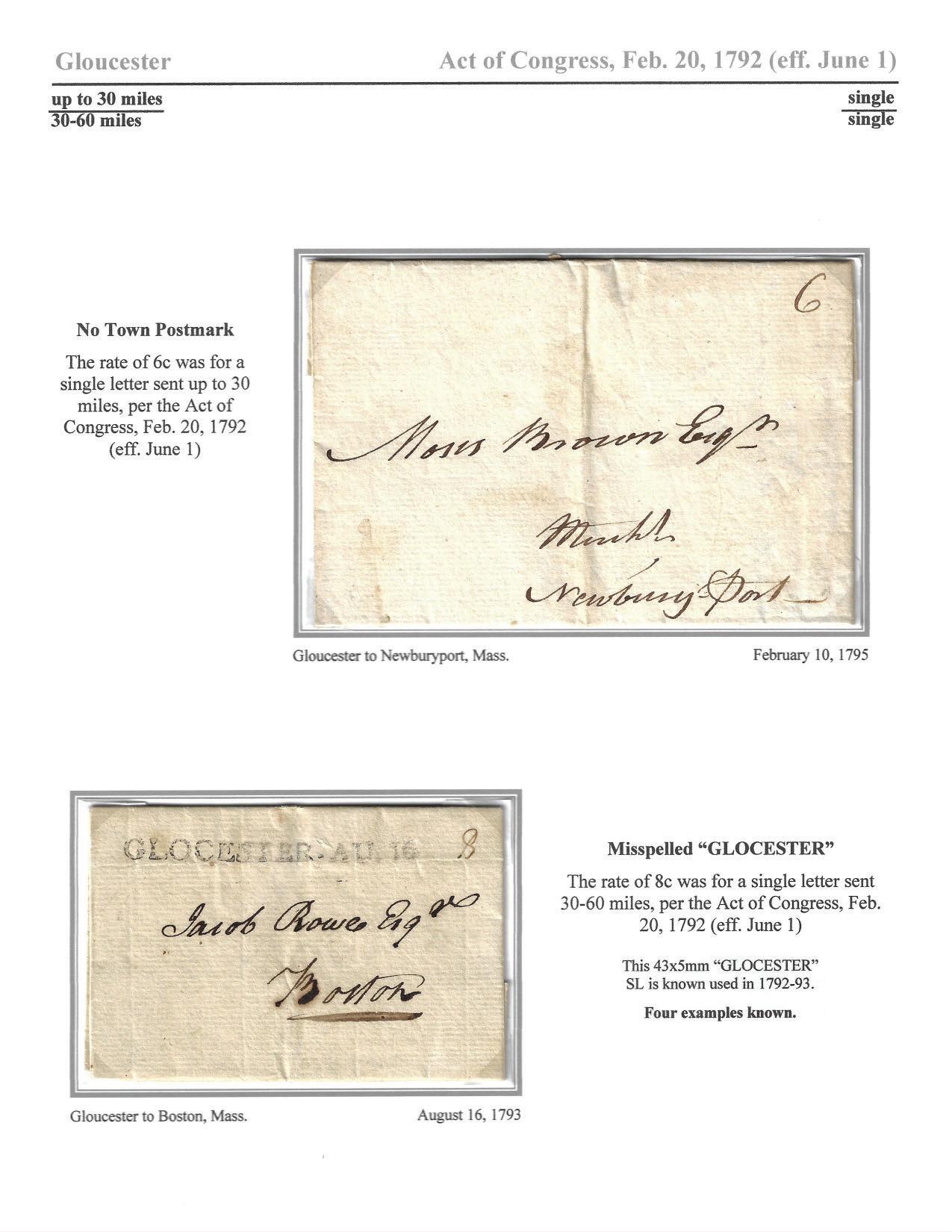
9 minute read
A Framework for Exhibiting by Mark Schwartz
A Framework for Exhibiting
Mark Schwartz
Advertisement
What is a philatelic exhibit?
This short article is aimed not only at collectors who might be thinking about doing an exhibit for the fi rst time, but also for beginning and maybe even intermediate exhibitors. My objective is to provide a framework for thinking about an exhibit – what it is and is not – and what is the objective of an exhibit. It is informed by several years as a philatelic judge and longer as an exhibitor.
At its most basic, an exhibit is an exercise in clear and concise communication of a complete philatelic story. The specifi c story may vary, depending on the type of exhibit, such as traditional, postal history, thematic or display. It is made up predominantly (or even entirely) of philatelic material. To emphasize the need to be clear and concise, please note that judges spend maybe 8 hours (480 minutes) at most at the frames judging exhibits. For 40 exhibits, that’s 12 minutes per exhibit, maybe two minutes per frame and eight seconds per page. Judges cannot aff ord to spend signifi cant time on an individual page to try to decipher what the exhibitor means or why an item is important.
Clarity is critical if the reader is to understand what the story is that the exhibitor will tell and to follow it easily through the one to eight or more frames of the exhibit and never lose track of where you are and where you are going. The title page is especially important. It is there you provide: fi rst, the purpose and scope of the exhibit, which tells you in broad terms what the exhibit is about; and second, through the plan, in what order the story will be told, e.g., the beginning, middle and end. The plan is followed page by page, frame by frame, in the headers (and subheaders) on each page; through them you know at all points, exactly where you are in the exhibit.
Are you creating an exhibit or an article?
The term concise diff erentiates an exhibit from an article. When you put together an article, you expect the reader to read every word. Words have their own fl ow and help color the story and give it texture. The illustrations are there for visual interest and to give context to the text. When you put an exhibit together, it is prett y much the reverse. The philatelic (and sometimes non-philatelic) material is the “star of the show,” often representing many, many years of eff ort and substantial expense. The text is there to concisely explain the material and to demonstrate philatelic (and at times thematic) knowledge.
If you put too much text in an exhibit, it can pull att ention away from the material. It can also hide the key information meant to provide a continuous
354 November-December 2022 www.collectorsclub.org
Figure 1.

thread to the story (such as rates, markings and routes) and make the story hard to follow. I learned that lesson early. At a local club meeting 13-14 years ago, I showed another member, who happened to be an experienced judge, one of the pages from my Boston multi-frame exhibit. He took one look and said, “take out every other word – at least.” As I reread the text on the page, I realized that the key points I was trying to make were gett ing lost in a large amount of much less important text.
Every exhibit has a primary focus (or thread). For postal history exhibits, that tends to be rates, routes or markings. The primary focus needs to be the most obvious information on the page. In my multi-frame Boston exhibit, I organized it by rate period. I consistently put that rate information next to the cover in
Collectors Club Philatelist Volume 101, Number 6 355
12-point type. You should be able to go from one cover to another and from page to page, and easily fi nd that information.
But since the judges look for the exhibitor to demonstrate philatelic knowledge, which is critical to get high scores in the knowledge and research sections of the judging evaluation form, you will want to include other types of philatelic information besides that of the primary focus. In addition to rate information, you may want to include information about the markings on the cover. Such secondary information should be evident, but it should not fi ght the primary focus of the exhibit for att ention. Use a smaller font, indicating its subordinate nature; fi nd a diff erent place for it on the page in relation to the cover. Perhaps enclose it in a small box.
The page shown in Figure 1 is from an exhibit on the Postal History of Gloucester, Mass. and its Environs. This page shows how the headers and subheaders let the viewer know where they are in the exhibit. This exhibit is a rate study, and this page covers the fi rst two rate zones of the Act of Congress, 1792. Rate information takes the primary focus and is next to the cover in 12-point type. Below that (for the bott om cover) is a description of the marking(s) on the cover in 10-point type as secondary information. Finally, other secondary information is directly below the cover. Consistency in the placement of information makes it easier for judges (and other viewers) to follow the exhibit.
How do I make sure the judges see and understand the most critical material?
Key material in your exhibit needs to be highlighted. As noted earlier, judges do not have the time to pore through the exhibit and decide what is most critical to your story, what was the most diffi cult to fi nd and what was the rarest. Start by telling them on the title page how to identify the material in the exhibit. Perhaps you can use a red border around the material or perhaps some other obvious symbol near the cover or stamp. But, in addition to that, tell them why it is important. Terms such as “rare” or “scarce” are too vague. Do you know how many are known? Is it a judgment based on your own research and that of colleagues? Is it from a census by a well-known expert or specialty society? Is it the earliest (or latest) known use of a philatelic marking? Tell them that. It defi nes the importance and adds to their appreciation of your knowledge and research.
Explore our website and see just how much more the Collectors Club can offer!
www.collectorsclub.org
356 November-December 2022 www.collectorsclub.org
Importance, Condition and Presentation
Three aspects of exhibiting that have not yet been covered are importance, condition and presentation. Importance is a topic that generates discussion when judges get together, because it is less tangible than the other criteria judges use to evaluate an exhibit. Part of it relates to the importance of the exhibit to the development of the postal system, importance to the region, the philatelic signifi cance of the subject in terms of its scope and the philatelic interest of the exhibit. For example, an exhibit about a large city such as Boston or New York, with more and varied postal activity, shows a greater impact on philately than one about a small city or a village. A second part is the degree to which the exhibit represents a signifi cant challenge in scope or complexity, whether it is the best example of this subject and cannot be easily duplicated.
Presentation is also less tangible. What impression do you get when standing a few feet away from the frames? Does it have a pleasing appearance? Does it look physically balanced? Do pages look uncrowded? Or is its appearance jarring? Does it have “railroad tracks” where covers in a frame are in a vertical line, or where everything looks crowded and uneven?
Judges also pay att ention to the condition of your material. Ten points can be given for condition, but they will likely deduct for covers with ragged edges or with stains on them, or for less than well-centered stamps in a traditional exhibit. But judges also recognize that condition refl ects the environment. Covers sent from a war zone in a hot humid area are not expected to be pristine. And when the item is one of only a few known, more leeway is usually given for a less-thanperfect item. But for items in less desirable condition, exhibitors should always be on the lookout for bett er examples.
What is discussed here goes for both multi-frame and single-frame exhibits. But single-frame exhibits have an additional burden. They must tell an entire story in a single frame. Be careful not to pick a subject that is too broad to be covered in 16 pages. Pay particular att ention to the scope of your single-frame exhibit. You may have to reduce its scope to fi t one frame.
Invite a another collector to attend the next online event of the Collectors Club.
358 November-December 2022 www.collectorsclub.org
Summary
• Be clear and concise; one of the important commandments of exhibiting is “do not confuse the judges.” • Make sure your storyline is stated up front and is recognizable throughout the entire exhibit. • Demonstrate your philatelic knowledge but make sure the judges don’t get lost in a lot of extra text. • Highlight your critical items and tell us why they are critical; obtain them in the best condition possible. • And make the exhibit pleasing to the eye; you’ve spent too much money and eff ort not to.
Good luck on your fi rst or next exhibit!
Mark Schwartz
Mark got into organized philately about 15 years ago and has participated at a board level in several major organizations (American Philatelic Society, United States Philatelic Classics Society, American Association of Philatelic Exhibitors, CANEJ and Boston2026).
He fi rst exhibited in 2008 and has since shown 16 diff erent exhibits. Nearly all have reached the large gold level and 11 have shared 32 grand awards. His Boston Postal History exhibit was awarded the Champion of Champions in 2015 and was a candidate for the Grand Prix at NY2016. Three others have won single frame CofC competitions (Salem Trade Routes, in 2013; U.S. Retaliatory Rate, in 2014; and Boston’s Use of the 1847s, in 2020). He is an accredited philatelic judge, has served on CANEJ for the last several years and has co-authored a regularly appearing column on exhibiting in The American Stamp Collector & Dealer.
Time proven Showgard® Mounts...
–Showgard Mounts are the choice and recommendation of experienced collectors. –For over 25 years Showgard Mounts have proven perfectly safe for stamps under every climatic condition in all parts of the world. –It is a philatelic fact that collectors switch to Showgard Mounts as they gain in experience. It’s a sensible idea to start and save with Showgard Mounts. At dealers everywhere. Available with Dark Display or clear see-through background.
For Free Sample and Size Gauge Please Write VIDIFORMS CO. INC. Showgard House 115 North Route 9W Congers, NY 10920
Collectors Club Philatelist Volume 101, Number 6 359










